Storyboard
Before any filming could begin, I needed to construct and plan in order to be able to film efficiently. My plan featured timings of shot, camera angles, lighting, sound effects and dialogue in order to try and provide as much clarity for myself as actor and director, as well as my other actors. The storyboard allowed me to film in a structured and clear way, which in turn saved time and allowed me to go through the process at my own pace as I knew where I was in terms of progress. These however, were only initial templates and in order for my filming to work in terms of practicality, compromises had to be made in terms of sacrificing shots and a difference in final location to which had been initially planned meant original shots could not have been accomplished to the same effect, but still retained the original premise to which they had been designed.
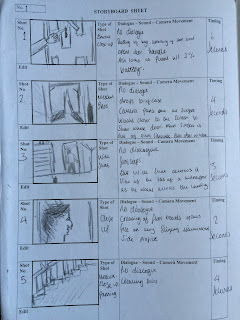 |
| 1. |
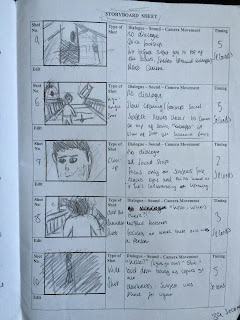 |
| 2. |
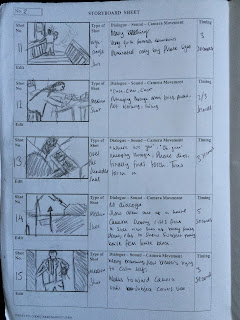 |
| 4. |
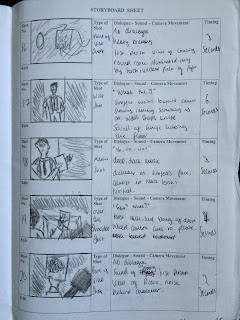 |
| 5. |
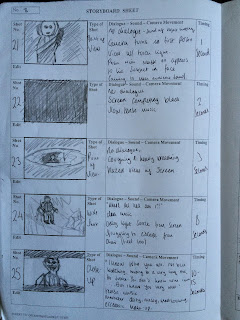 |
| 6. |
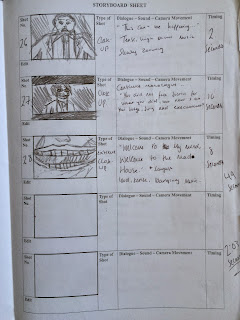 |
| 7. |
My storyboard did not include opening credits as at this point I was still yet to decide the name of the film, and I didn't feel I could construct an opening credits sequence, even as a rough copy without a name for my film, as I would have wanted to base the sequence on the name I was to decide. My final piece doesn't entirely match up to how my initial storyboard, but a lot of ideas were still taken from the original ideas. A lot of changes were made due to practicality, how the shot looked when actually done and changes in location.
Scripting
As you can see on my storyboard, for the majority of my film, there is little-to-no speech or any dialogue at all. There is a monologue that will be performed by myself as the antagonist. This monologue will be played to the protagonist on a television or a laptop and the main premise of the speech is to show the protagonist and the audience that firstly, this character is clearly unstable, secondly, this character has obviously experienced some trauma to which he is blaming the protagonist for, and thirdly that the protagonist is in severe danger.
The main aim of this speech is to tease the audience, which will provide the tension. The speech is designed so that it draws attention to the fact that the protagonist is in clear, immediate danger, but prompts many questions for the audience due to how open-ended the speech is. The audience will be asking who this man is, what has the main character done, what the antagonist is planning on doing to the protagonist, as well as many other questions that have been devised to evoke anxiety for the character within the audience.
Where I've scripted the antagonist to say "Welcome to the Mad House." , This is because that is an initial idea to a possible title for my film, but if I decide against this as a title, it would clearly be inappropriate and possibly confusing for the audience and will be taken out.






No comments:
Post a Comment